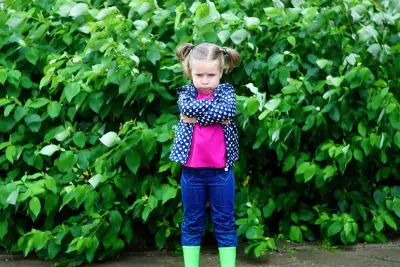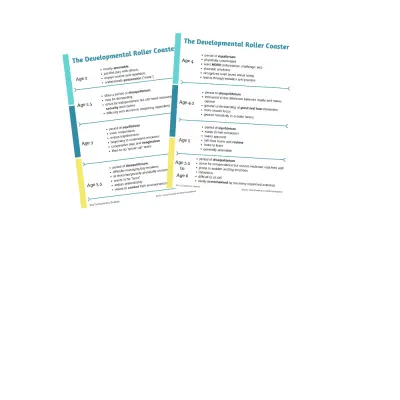Sneak peek: Toddler growth spurts can influence children’s behavior in challenging ways. Find out what to look for and when to expect growth spurts.
I’m 10 years into this motherhood journey and I still occasionally wonder if these boys of mine were given to the right mother. Yes, I gave birth to them and I know the intricate details of their unique personalities. But they are SO different from me—they are super active, loud, extroverted and very strong-willed (or shall we say “spirited”). On a good day, I feel like I understand a lot about them and child development. I know all the ins and outs of toddler development, temperament, and more. Understanding those things helps, for sure, but some days I still question my parenting abilities — their toddler growth spurts were definitely one of those times.

Toddler Growth Spurts in Action
Let me offer one case in point. In our house, it will forever be known as, “that trip to Walmart.”
The boys and I had to pick up a few items at Walmart. It was supposed to be a quick in-and-out trip. We were at the self-checkout and I got distracted helping my older son purchase baseball gear. He had just recently gotten his first debit card on which to save his allowance money. He was trying it out and needed help figuring out the machine.
Meanwhile, my younger son (about 4.5 at the time) was cruising around the self-checkout area looking at all the racks full of candy, gum, and other impulse-buying temptations.
I was finishing up helping my older son when I looked down and saw his little brother biting into an unpurchased chocolate egg! I was so shocked. The first thing that ran through my mind was, “what kind of parent am I that my almost-five-year-old doesn’t understand that you don’t eat unpurchased food (especially candy!) from a store.”

I mostly stayed patient as I handled the situation and left the store. I reiterated to my young son the rules and guidelines about purchasing items and that he must always ask me before grabbing something in a store. He was upset because he sensed that I was disappointed in him, but we moved on with the afternoon.
A few days later, after experiencing several other instances of uncharacteristic behavior from my younger son, I had an epiphany–toddler growth spurts! Yes, at age 4.5, he’s technically not a toddler anymore but it’s close enough. Although the toddler growth spurts timeline that’s running through my mind doesn’t include a category for “acts like a child half his age in Walmart,” I know that some level of regression in behavior is not uncommon.
What are Growth Spurts in Toddlers?
Many of us associate the term “growth spurt” with either infancy or the teenage years. Both are times of rapid physical growth. However, toddler growth spurts are also common and perhaps equally tumultuous.
Growth spurts can be both physical and cognitive. Physically, young children grow at an incredibly rapid rate during the first few years of life. If you feel like your child looks taller every morning, you could be right!

Cognitive growth spurts (or cognitive leaps) are sometimes more difficult to spot. Just as I blamed my parenting skills for my son’s regression to less-regulated behavior, we often blame ourselves (or perhaps our kids’ personalities) for their sudden uncharacteristic behavior. Many times, however, a sudden behavior change (e.g., more tantrums, sleep patterns, etc.) is a big signal of a blimp on the toddler growth spurts timeline.
Cognitive growth spurts occur because a toddler’s brain makes new neural connections and prunes ones that are not being used. While adults’ brains have been mostly “pruned” to include well-developed connections, toddlers’ brains are relatively chaotic (not surprising, right). Their neural connections for everything from language to emotions to motor skills are still being refined.
Related reading: One Research-Backed Way to Diminish Toddler Tantrums
What are the Signs of a Growth Spurt?
When discussing toddler growth spurts, there are a number of “old wives’ tales” that generally emerge. Perhaps your grandma told you that when your legs hurt at night it meant you were growing. Well, turns out, she was probably right! Other signs of a growth spurt may not be so evident:
- Repetitive, almost compulsive practice of a skill–this might be a physical skill like crawling, pouring, stacking or a cognitive skill like repeating numbers, words or rhymes.
- Crankiness–kids become unusually grumpy or whiny. This is usually due to the rapid physical or mental growth that is consuming a lot of their energy.
- Extreme hunger–speaking of energy, growing takes a lot of fuel. Toddlers experiencing a growth spurt may seem extra hungry.
- Regression in behavior–just as my son regressed to more toddler-like impulsive behavior during a growth spurt, this type of behavioral regression is not uncommon. With more attention and energy being placed on the new skill or growth area, sometimes other areas (like impulse control) briefly falter. That being said, if you feel like your child’s behavior is regressing significantly and it persists over time, it might be worth discussing with your pediatrician.
- Changes in sleep patterns–we often see this in infants but it can occur in toddlers as well. Toddlers experiencing a growth spurt may have trouble falling asleep, wake more often, or sleep longer than normal.
Related reading: Research Meets Real Life: Proven Ways to Manage Toddler Screen Time
Toddler Growth Spurts: Ages and Stages
THIS is the key question parents want to know, right? At what ages do growth spurts in toddlers occur? Can I possibly predict when my toddler will experience a growth spurt so I might be better prepared to handle it?
Although each child’s developmental path is unique, we do have some great insight thanks to the work of Dr. Arnold Gesell and his colleagues at the Gesell Institute of Child Development. In the 1950s this group did groundbreaking work studying the developmental patterns of thousands of children over many years. These patterns were reexamined in 2010 with remarkably similar results.

In general, they found that children experience periods of equilibrium and disequilibrium throughout their development. These periods of disequilibrium are what we might today call “growth spurts.” It’s a period of change, of figuring out, of a child finding oneself and their place in the world once again. This quote from Gesell describes it well,
There are alterations of relative equilibrium and of transitional disequilibrium; there are rhythms of accent in introverted versus extroverted activity, in home versus school, in self versus group interests, in fine motor versus gross motor movements, in the to-and-fro shifts, in the delicate controls of eye movements. Only by identifying the developmental shifts in such counterbalanced traits can we arrive at a more accurate picture of what [children] are really like. Development does not advance in a straight line.
Gesell
Through these studies, we see a pattern emerging in which (in the early years) every 6 months to a year a period of disequilibrium emerges. Approximate ages are provided for these patterns, but they can vary for each child. The key point is to understand these this “roller coaster” of development is typical and actually beneficial to children’s development.
Want to learn more specifics about what to expect from toddler growth spurts at each age? Download this helpful printable for ages 2-6. Click on the image to download.



Leave a Reply